Sailing Aids
Tools for Possibilities: issue no. 49
Once a week we’ll send out a page from Cool Tools: A Catalog of Possibilities. The tools might be outdated or obsolete, and the links to them may or may not work. We present these vintage recommendations as is because the possibilities they inspire are new. Sign up here to get Tools for Possibilities a week early in your inbox.
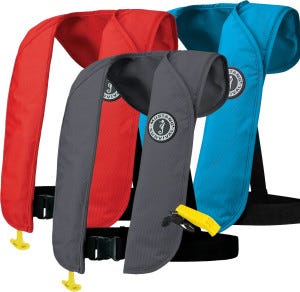
Comfortable water safety
If you mess around in boats (and you should), a life jacket is a very good thing to have, or even better, to WEAR. Over the last few years there has been a revolution in life jacket comfort as a variety of automatically inflatable life jackets have come on the scene. Inflatable PFDs (Personal Flotation Devices) overcome the two primary reasons people don’t wear a life jacket: the bulk and heat a life jacket captures. I recommend a full collar auto-inflatable type since it will bring you to the surface if you go into the water unconscious (for example if you knock your head).
I hardly notice mine (a Mustang Survival Classic) when I have it on. Whether you kayak, jet ski, or boat, there really isn’t an excuse not to wear one. In addition to the Mustang Survival line, another source for inflatable life jackets is Sterns, which produces the Sospenders line. Both manufacturers are approved by the US Coast Guard.
One important note: Wear your inflatable life jacket OVER your outwear. You don’t want to be sharing the inside of your zipped up jacket with one of these when you go in the water. Something will break and it is likely to be you. — Daren Lewis
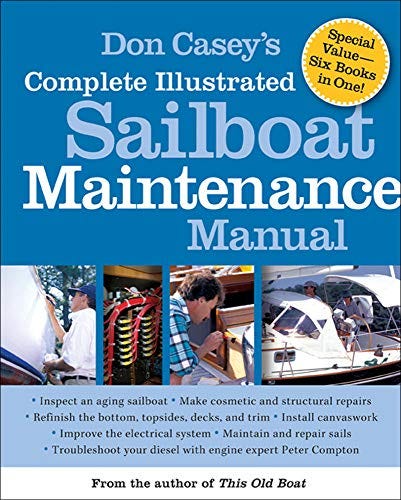
Keeping your boat in ship shape
Don Casey’s Complete Illustrated Sailboat Maintenance Manual
When I need to repair anything on my sail-boat this is the first book I turn to. The illustrations are excellent. The book is actually six books compiled into one, which makes navigation of it a bit difficult but not impossible. The explanations are very clear with detailed information on things such as fiberglassing with resin versus epoxy, electrical wiring, and inboard diesel engines.
As a companion to this I find my subscription to Practical Sailor magazine to have up to date first hand reports on sailing equipment and products from porta potty deodorizers to bottom paints to navigation systems. — Monty Zukowski
- Symmetry From directly forward and astern, the hull should appear symmetrical and the keel perpendicular to the deck. Sighting the hull through the gridwork of a plastic plotter simplifies this determination. Any detectable difference from one side to the other suggests major trouble. (p 11)
- Galvanic Corrosion A more insidious problem is galvanic corrosion. Connecting the green wire to an underwater fitting completes the circuit between your boat and all other nearby boats with their own green wires grounded. With seawater as the electrolyte, every grounded fitting essentially becomes part of a big battery. (p 557)
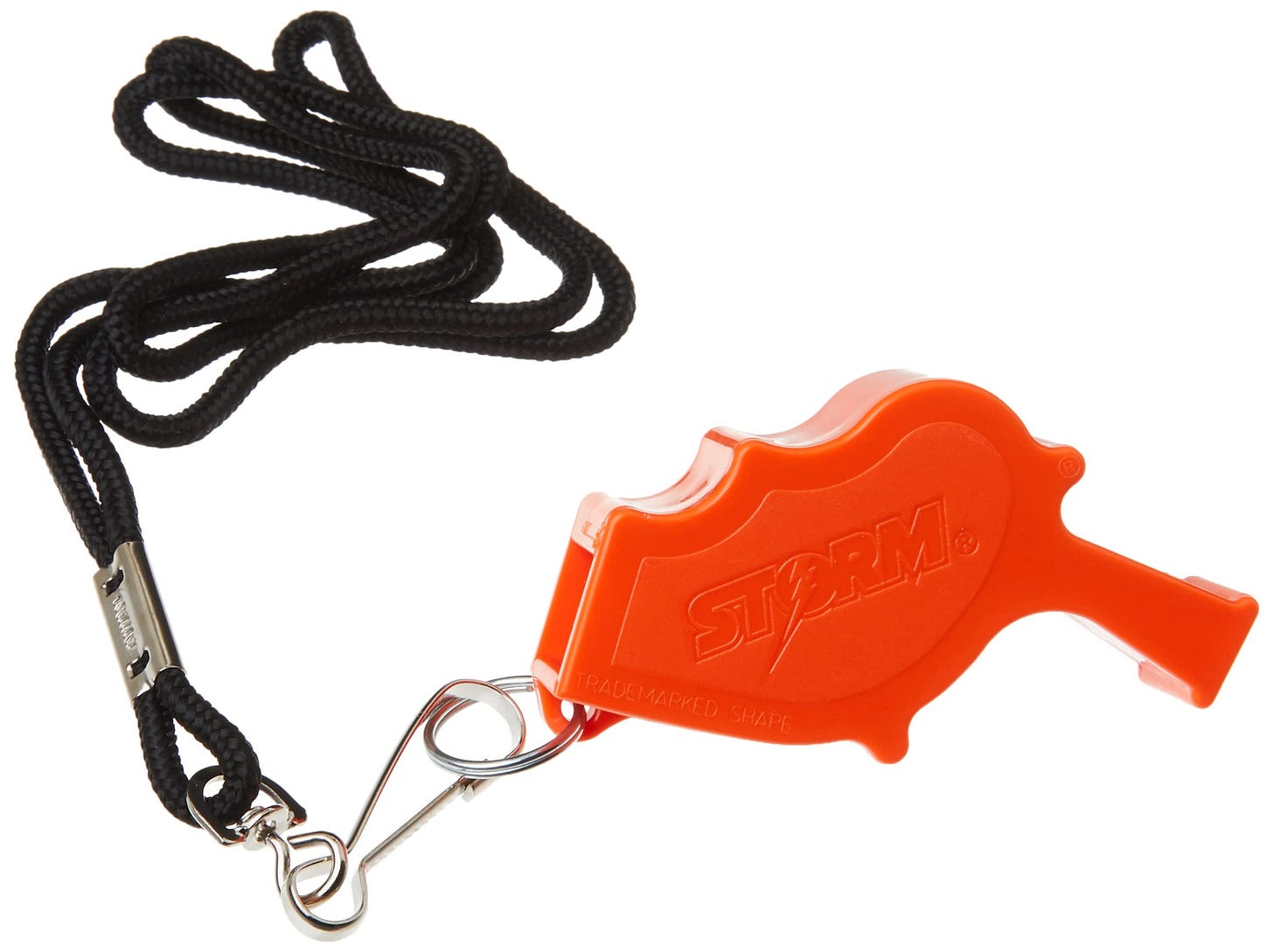
Ultra-loud, all-weather noisemaker
I found this incredibly loud whistle while putting together a disaster preparedness kit for my car. I did some non-scientific testing against my Fox 40 (rated 115 decibels) by having my son blow into each of them across a soccer field. The Storm (rated 118-120db) definitely sounded louder (decibels are based on a logarithmic scale with a base of 10, so the Storm’s decibel intensity is almost 3 times the Fox 40). It is also advertised as working under-water (the chambers clear as you blow). I haven’t tried it underwater yet, but regardless, this is the loudest whistle I have ever heard. — Mark Chow-Young
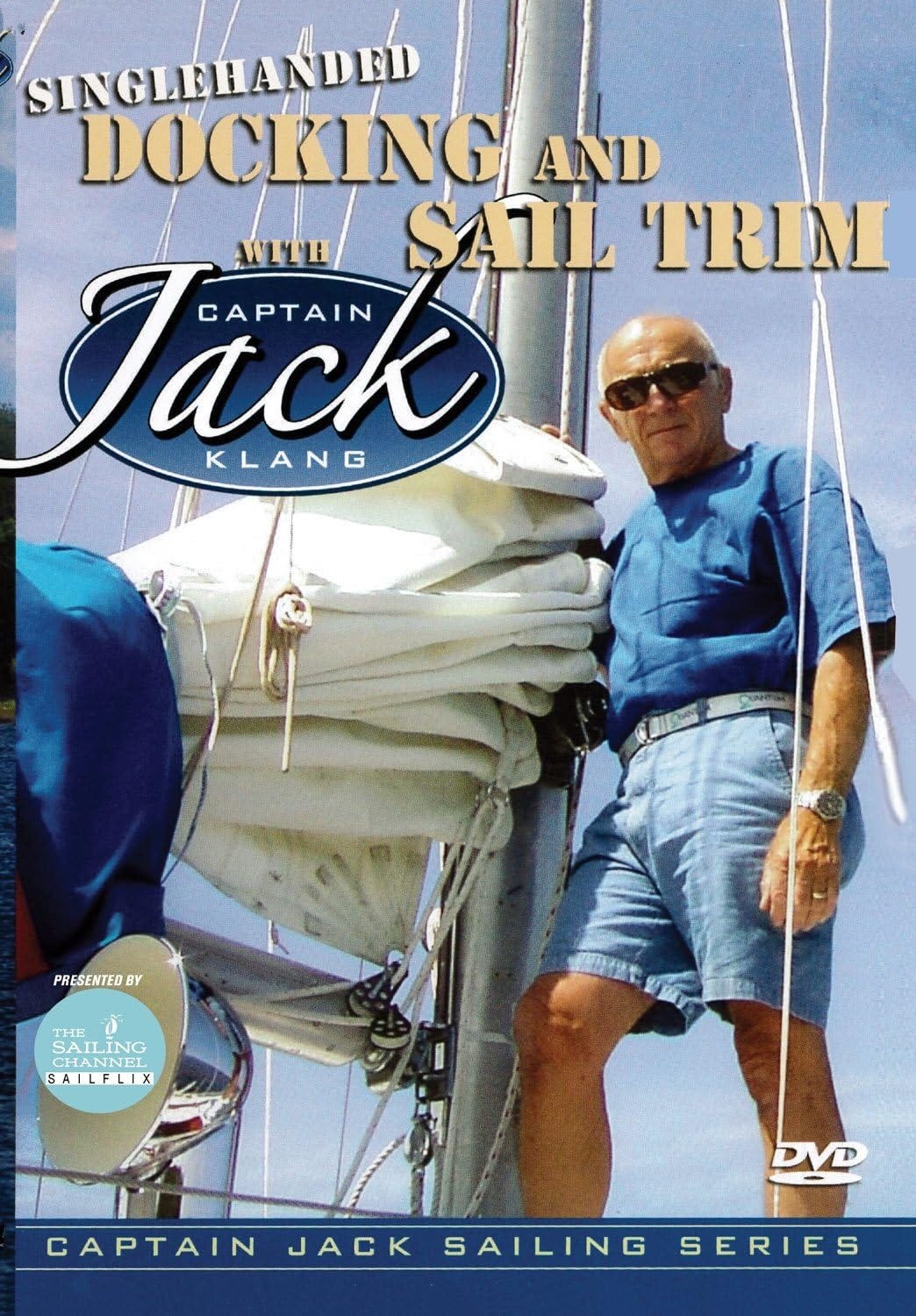
How to dock
Single Handed Docking and Sail Trim with Captain Jack Klang
I have been on the water in one fashion or another for over 40 years and this is the first comprehensive presentation I have seen on how to dock in all types of conditions and situations. Captain Jack, in a mere 53 minutes, covers the main topics that drive sailors nuts: docking and sail trim, especially spinnakers. First he uses models to describe the maneuvers and then we see him on his own boat demonstrating in real time. He shows how to maintain control of your boat with the wind on the bow, on the beam or aft. He covers situations with adverse currents. What I found most intriguing is how he backs his boat into a slip to keep the bow into the wind. He demonstrates a few basic con-cepts, like prop-walk and spring-lines, and shows how to use a single spring line (a line attached slightly midship) to control the boat’s movements. He does this not only single handedly, but without jumping off the boat. Much safer.
I wish I would have had this video when I was a beginner. It would have saved a lot of hard knocks while docking and would have saved my having to unlearn many of the bad habits I picked up trimming sails.The interface between the land and sea is often the most challenging aspect of boat-ing. This is especially true as marinas get tighter and tighter as they pack more and more boats into them. I still sail, but four years ago sold my sailboat and bought a Nordic Tug. Docking has always been a challenge and is even more so with the tug. The tug idles much faster, so everything happens faster. It is also much less maneuverable. Even if you are a power boater, the first half of the DVD concerning docking is still well worth the price. Just fast forward through the sail-handling parts or watch it and be inspired to go sailing. — Dean Raffaelli
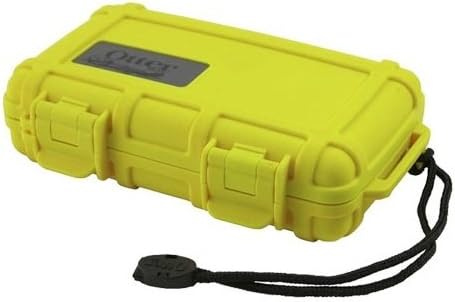
Hard waterproofing
Electronics and water don’t mix well. Keeping digital gear dry around water is a tricky job made perfect by an Otterbox. Tough as concrete, lightweight, watertight as a submarine, and padded inside, an Otterbox will keep cameras, cell phones, navigation equipment, or wallets safe and dry through rapids, splashes, or 100 feet of water. They are indestructible. — KK
08/28/23





